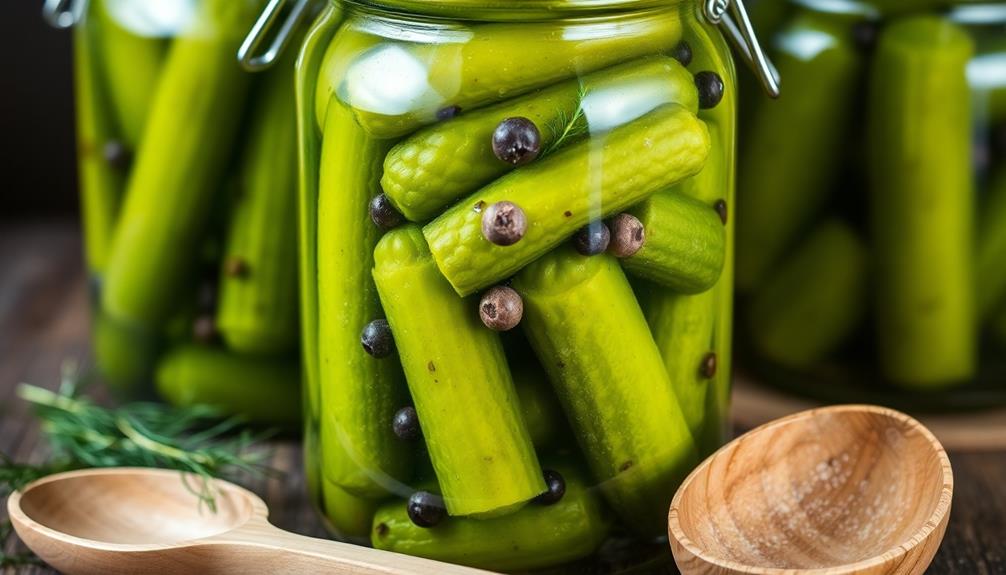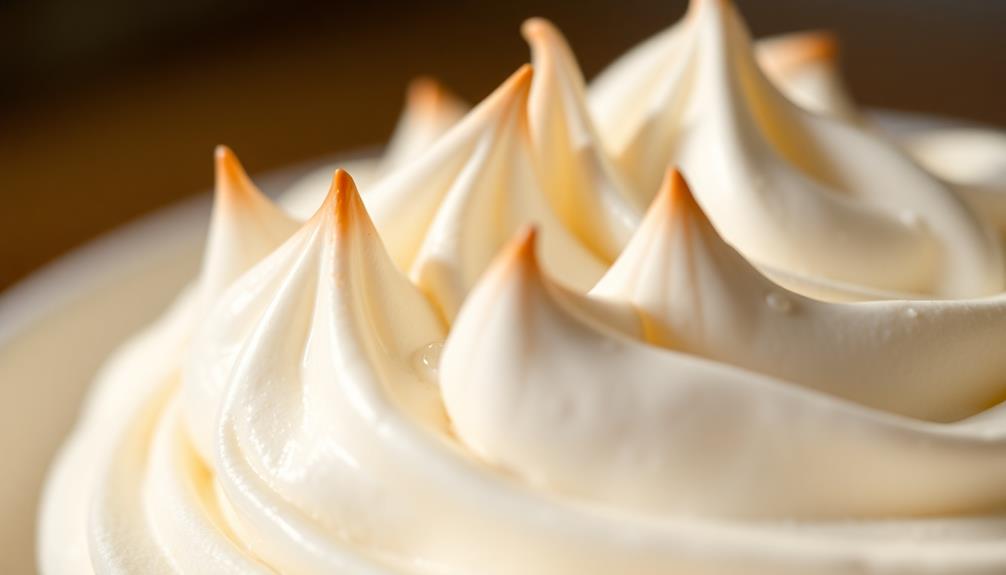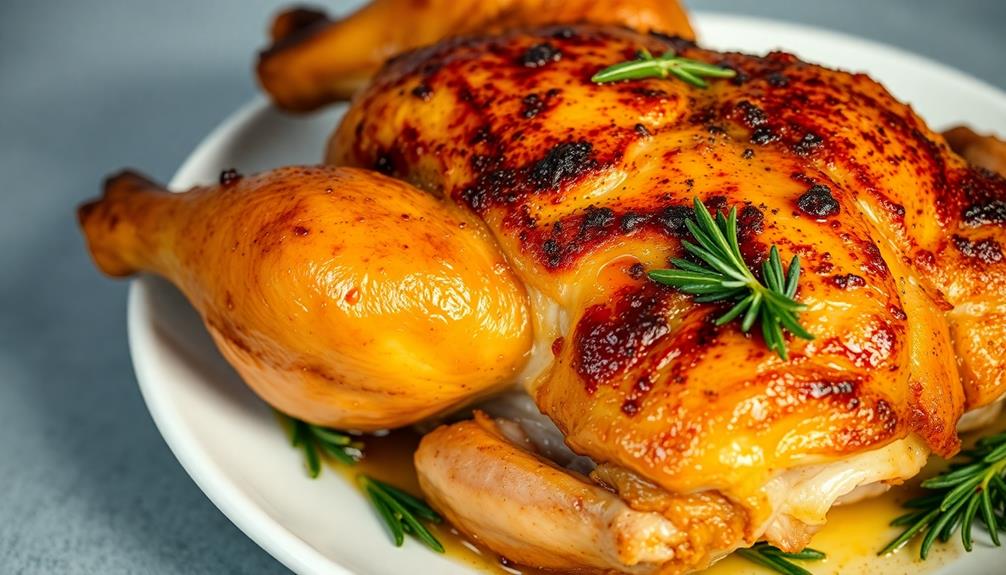To reduce acrylamide in homemade French fries, focus on controlling your frying temperature and using blanching. Keep the oil between 325-350°F to prevent excessive browning, but don’t go higher, as too much heat increases harmful compounds. Blanching your fries first helps remove surface sugars that cause acrylamide during frying. Perfecting these steps guarantees safer, crispy fries, and more details await if you explore further.
Key Takeaways
- Blanching removes surface sugars and reduces acrylamide precursors before frying.
- It lowers browning intensity, decreasing harmful acrylamide formation during cooking.
- Proper blanching temp and time optimize safety without compromising fry texture.
- Combining blanching with controlled oil temperature minimizes acrylamide risks.
- Incorporating blanching improves both safety and overall quality of homemade fries.

Making homemade French fries is a delicious way to enjoy a classic comfort food, but it’s important to be aware of the health risks associated with certain cooking methods. One key factor in reducing harmful compounds like acrylamide is understanding how oil temperature and frying duration influence the process. When you fry your potatoes, maintaining the right oil temperature is essential. If the oil is too hot, usually above 350°F (175°C), the fries will cook quickly on the outside while the inside remains undercooked. This high temperature accelerates the Maillard reaction, which is responsible for browning but also for forming acrylamide—a potential carcinogen. Conversely, if the oil temperature is too low, your fries may soak up excess oil and become greasy, and you’ll need to fry them longer, increasing their exposure to heat and further promoting acrylamide formation. Hence, using a thermometer to keep your oil consistently around 325-350°F helps you strike a balance. This range allows the fries to cook thoroughly without over-browning or excessive acrylamide production.
Frying duration also plays a vital role. The longer your fries stay in hot oil, the more likely they are to develop higher levels of acrylamide. Ideally, you should aim for a frying time of about 3 to 5 minutes, depending on the thickness of your fries. Thin-cut fries cook faster and require less time, reducing the risk of over-browning. Thicker cuts need a slightly longer frying period, but still, you want to avoid leaving them in the oil until they turn deep brown or black. A good tip is to monitor the fries continuously and remove them once they reach a light golden color, which typically indicates minimal acrylamide formation. Also, consider blanching your potatoes before frying. This step involves boiling or soaking the cut potatoes in hot water briefly, which helps remove surface sugars and reduces the precursors of acrylamide. Blanching not only lowers the formation of harmful compounds but also improves texture and color during frying. Additionally, controlling the cooking environment by maintaining consistent oil temperature can further enhance the safety and quality of your fries. In addition, understanding the chemical reactions involved in browning can help you better control the process and avoid over-formation of acrylamide. Using proper frying techniques can help minimize the formation of acrylamide and improve overall safety. In essence, controlling both oil temperature and frying duration can considerably lower the acrylamide levels in your homemade French fries. By keeping the oil at a moderate temperature and not over-frying, you create a healthier snack that still satisfies your craving for crispy, golden fries. Remember, precise temperature control and attention to detail make all the difference in reducing health risks while enjoying your favorite comfort food.
Frequently Asked Questions
Does Soaking Potatoes in Vinegar Reduce Acrylamide Formation?
You might wonder if vinegar soaking can cut down acrylamide formation. While some studies suggest vinegar soaking may help, the evidence isn’t conclusive. Vinegar soaking could potentially reduce acrylamide by altering potato surface properties, but it’s not a guaranteed method. To effectively reduce acrylamide, focus on proper blanching and cooking techniques. Vinegar soaking might be a helpful step, but don’t rely on it alone for significant acrylamide reduction.
Can Microwave Blanching Be as Effective as Boiling?
Microwave blanching can be surprisingly effective, but it depends on your microwave’s efficiency and your blanching technique. Unlike boiling, microwaves heat water and potatoes quickly, reducing cooking time and preserving texture. To maximize results, use short, even bursts and cover the potatoes to retain steam. While boiling often ensures uniform blanching, microwave blanching offers a faster alternative, making it a practical choice if you adapt for your appliance’s efficiency.
What Are the Best Potato Varieties for Low Acrylamide?
When choosing potatoes to reduce acrylamide, focus on variety selection and potato genetics. You should pick varieties with lower sugar content, like Russet Burbank or certain red and white potatoes, since high sugar levels increase acrylamide formation during frying. Opt for potatoes bred for lower sugar accumulation, which helps you produce crisp, tasty fries with less health risk. Your choice of potato variety directly impacts acrylamide levels in your homemade fries.
How Does Storage Temperature Affect Acrylamide Levels?
You should know that storage temperature directly impacts acrylamide levels in potatoes. By maintaining proper temperature control, you enhance storage stability and prevent sprouting or spoilage. Cooler temperatures slow down enzymatic reactions that lead to acrylamide formation during cooking. Keep potatoes in a cool, dark place, ideally around 45-50°F, to minimize acrylamide risk. Proper temperature control guarantees fresher potatoes, reducing the potential for high acrylamide levels in your homemade fries.
Are There Natural Additives That Inhibit Acrylamide Formation?
Coincidentally, natural inhibitors can play a role in reducing acrylamide formation, making your cooking safer. You might find that certain additive alternatives, like rosemary or green tea extracts, act as natural inhibitors, helping to cut down acrylamide levels in your fries. Incorporating these natural additives into your recipe could be an effective way to minimize health risks without relying on synthetic chemicals, giving you healthier, tastier results.
Conclusion
By applying these blanching tips, you can turn your homemade fries into a healthier treat. Think of it as giving your fries a secret recipe for safety and flavor, just like a chef’s hidden ingredient. Remember, small changes make a big difference—so next time, embrace the science behind perfect, crispy, and safer fries. After all, isn’t it worth savoring your favorite snack without the worry? Happy frying!










